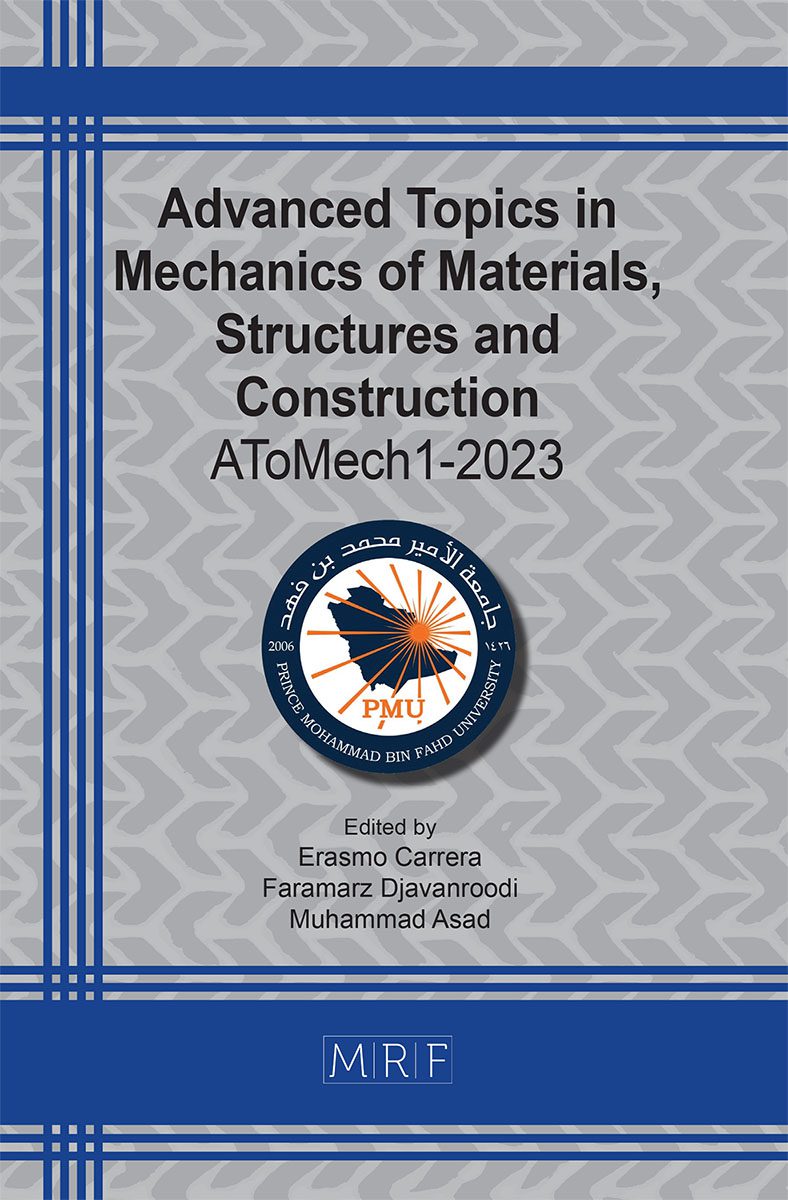Response of GFRP bars at different temperatures
Farid Abed, Zeinah Elnassar, Wael Abuzaid, Yazan Alhoubi
download PDFAbstract. Owing to their numerous advantages, industries have been adopting fiber-reinforced polymer (FRP) bars as reinforcement in concrete members due to their superior mechanical properties and high durability. More specifically, glass FRP (GFRP) bars have been increasingly adopted for use in harsh environmental conditions due to their excellent corrosion resistance. However, the compressive response of the GFRP bars at high temperatures has yet to be studied. This paper presents the results of an experimental study that aims to investigate the mechanical behavior of glass fiber reinforced polymers (GFRP) bars subjected to compressive loads at various elevated temperatures and deformation rates. Four different temperatures, ranging between ambient and 150°C, and two deformation rates were considered. The compressive strength and the modulus of elasticity for each bar sample are measured and the failure modes are demonstrated. It was observed that the compressive strength of GFRP bars is similar under both loading rates for all temperature conditions. However, the elastic modulus of the bars showed a slight discrepancy between the different load rates, especially at an elevated temperature of 150°C. The test results indicate a linear degradation in the mechanical properties as the temperature is raised. In addition, the observed failure mode for the tested samples is splitting of the bars.
Keywords
GFRP, DIC, Compression, Elevated Temperature
Published online 8/10/2023, 6 pages
Copyright © 2023 by the author(s)
Published under license by Materials Research Forum LLC., Millersville PA, USA
Citation: Farid Abed, Zeinah Elnassar, Wael Abuzaid, Yazan Alhoubi, Response of GFRP bars at different temperatures, Materials Research Proceedings, Vol. 31, pp 1-6, 2023
DOI: https://doi.org/10.21741/9781644902592-1
The article was published as article 1 of the book Advanced Topics in Mechanics of Materials, Structures and Construction
![]() Content from this work may be used under the terms of the Creative Commons Attribution 3.0 license. Any further distribution of this work must maintain attribution to the author(s) and the title of the work, journal citation and DOI.
Content from this work may be used under the terms of the Creative Commons Attribution 3.0 license. Any further distribution of this work must maintain attribution to the author(s) and the title of the work, journal citation and DOI.
References
[1] T.E. Glodek, S.E. Boyd, I.M. Mcaninch, J.J. Lascala, Properties and Performance of Fire Resistant Eco-Composites Using Polyhedral Oligomeric Silsesquioxane (POSS) Fire Retardants, J. Compos. Sci. Technol. (2008) 2994-3001. https://doi.org/10.1016/j.compscitech.2008.06.019
[2] B. Benmokrane, E. El-Salakawy, A. El-Ragaby, and T. Lackey, Designing and testing of concrete bridge decks reinforced with Glass Frp Bars, J. of Bridge Eng. (2006) 217-229. https://doi.org/10.1061/(ASCE)1084-0702(2006)11:2(217)
[3] A. Serbescu, M. Guadagnini, K. Pilakoutas, Mechanical Characterization of basalt FRP rebars and Long-Term strength Predictive model, J. Compos. Constr. 12 (2014) 1-13. https://doi.org/10.1061/(ASCE)CC.1943-5614.0000497
[4] M. Al Rifai, H. El-Hassan, T. El-Maaddawy, F. Abed, Durability of basalt FRP reinforcing bars in alkaline solution and moist concrete environments. J. Constr. and Build. Materials. (2020). https://doi.org/10.1016/j.conbuildmat.2020.118258
[5] F. Abed, A. El Refai, S. Abdalla, Experimental and finite element investigation of the
shear performance of BFRP-RC short beams, J. Struct. 20 (2019) 689-701. https://doi.org/10.1016/j.istruc.2019.06.019
[6] F. Abed, H. El-Chabib, M. AlHamaydeh, Shear characteristics of GFRP-reinforced concrete deep beams without web reinforcement, J. Reinf. Plast. Compos. 31 (16) (2012) 1063-1073. https://doi.org/10.1177/0731684412450350
[7] A. Al-Tamimi, F. Abed, A. Al-Rahmani, Effects of harsh environmental exposures on the bond capacity between concrete and GFRP reinforcing bars. Advances in concrete construction (2014). https://doi.org/10.12989/acc2014.2.1.001
[8] American Concrete Institute, “Building Code Requirements for Structural Concrete Reinforced with Glass Fiber-Reinforced Polymer (GFRP) Bars,” ACI 440.11-22, ACI Committee 440, Farmington Hills, MI, USA, 2022.
[9] L. AlNajmi, F. Abed, Evaluation of FRP bars under compression and their performance in RC columns, J. Materials (2020). https://doi.org/10.3390/ma13204541
[10] Q.S. Khan, M.N. Sheikh, M.N. Hadi, Tension and compression testing of fibre reinforced polymer (FRP) bars, 12th Int. Symp. Fiber Reinf. Polym. Reinf. Concr. Struct. FRPRCS-12 5th Asia-Pac. Conf. Fiber Reinf. Polym. Struct. APFIS-2015 Jt. Conf., Nanjing, China: Z. Wu, G. Wu & X. Wang; (2015).
[11] F. Abed, Z. Mehaini, C. Oucif, A. Abdul-Latif, R. Baleh, Quasi-static and dynamic response of GFRP and BFRP bars under compression, J. Compos. Part C Open Access 2 (2020) 100034. https://doi.org/10.1016/j.jcomc.2020.100034
[12] P. Thiyagarajan, V. Pavalan, R. Sivagamasundari, Mechanical characterization of basalt fiber reinforced polymer bars for reinforced concrete structures, Int. J. Appl. Eng. Res. 13 (8) (2018) 5858-5862.































